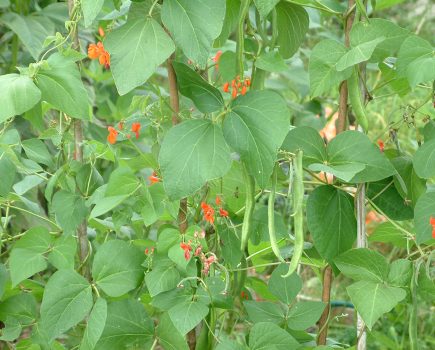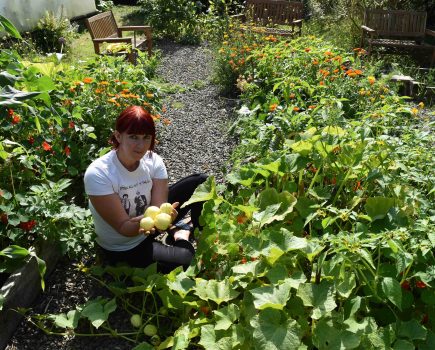MAY 22, 2008: The dormouse, rare orchids, orchards and even ponds are just some ofEngland’s most threatened species and habitats set to benefit asNatural England announced an extra £5 millionto support wildlife recovery.
Announcing the new funding, Natural England’s Chief Executive, Helen Phillips, said: “We continue to see declines in species such as the red squirrel, lapwing and starfruit, and their habitats. Halting these losses is vital, not just for our wildlife but because often they provide essential services such as clean water, flood management and carbon storage.”The funding goes into a new grant scheme ‘Countdown 2010’ which shares its name with the international campaign which publicises the commitment by European governments to halt biodiversity loss by 2010.The £5 million funding package over the next three years will work across two levels. It will fund projects that protect specific endangered species, but the selection criteria will also favour initiatives dedicated to the revival of habitats and species across large areas. The scheme is open to Voluntary Conservation Organisations who make a substantial contribution to Natural England’s lead role in safeguarding the natural environment.“Through this scheme we will work with our partners to deliver real gains for biodiversity that will benefit us all. Countdown 2010 will make a real difference to the practical delivery of projects on the ground, help people to take part in enhancing their local environment and secure the benefits a healthy natural environment makes to all our lives,” concluded Helen Phillips.These projects help target specific species and habitats in need of immediate action. The announcement of this extra funding illustrates Natural England’s commitment to begin its work to support some individual species under threat as outlined in Natural England State of the Natural Environment report published this week. Defra today also publishes an update of its priority list of threatened species and habitats in England.This list contains 941 species, nearly twice the number on the previous list, including familiar species that have suffered rapid recent declines including the hedgehog and house sparrow. It also contains 56 habitats including traditional orchards and some brownfield habitats that are important for wildlife. The Countdown 2010 fund will target the species and habitats on this list.Natural England’s Countdown 2010 Biodiversity Action Fund (BAF) will support projects carried out by Voluntary Conservation Organisations that directly contribute to the conservation of UK Biodiversity Action Plan (BAP) priority habitats and species in England. All grants will be made for three years from 2008 to the end of March 2011. Grants will be awarded for a minimum of £25,000 and a maximum of £250,000 in each of the three years. Further details and an application form can be found on the Natural England website www.naturalengland.org.ukBackground information and regional case studiesThe previous Countdown 2010 scheme funded 34 project across all nine English regions. It delivered significant gains for habitats, species and people, including 170ha of heathland restoration, 170ha of newly planted woodland and population increases for several priority species such as black grouse, cirl bunting and several brownfield invertebrates. The new funding package announced today by Natural England allows this essential work to continue.Natural England has been funding work across three regions to conserve our most threatened butterflies and moths with partners Butterfly Conservation. Two sites in the East of England have been identified as best practice models for the Grizzled Skipper, a rare moth species that thrives on mosaic habitats often found on former brownfield sites. While in the West Midlands the Back to Orange project is restoring habitats in the Wyre Forest which is a strong hold for the rare pearl-bordered fritillary.South WestWorking through the Species Recovery Programme, Natural England has been working hard to secure Britain’s only remaining native population of Ladybird’s spider (Eresus sandaliatus). This striking red and black spider’s numbers were limited to 56 in the 1994 and accounted for it being identified as a UK priority species for conservation action. Working closely with partners, the project has seen the population rise to 825 spiders in 2007, with two newly established and translocated populations showing encouraging signs. It is hoped that the populations will increase and spread so that we have several self-sustaining populations of the Ladybird Spider. * For information please contact Paul Wynne on 07900 608049.South EastThe Sussex Wildlife Trust has been working with 16 schools in Brighton and Hove to improve the biodiversity value of their school grounds. All of these schools have signed up to a manifesto which includes items such as identifying posts with biodiversity responsibility and promoting biodiversity in their development plans. Many of the school run biodiversity clubs and through these five new orchards have been planted with Sussex apple varieties, two new ponds have been created and a further three ponds have been renovated all within school grounds. This project used funding from the Countdown 2010 BAF. * For more information please contact Melissa Bocks on 020 7932 2243 / 07824 835454LondonTo support the recovery of the enigmatic Dormouse (Muscardinus avellanarius) Natural England’s Species Recovery Programme is funding the disease risk management of Dormice prior to their release to a number of sites across England. The strict quarantining and health screening carried out by vets at the Zoological Society of London (ZSL) ensures that the Dormice are fit, healthy and free of known alien parasites when their pens are opened and released into England’s countryside. The release of alien parasites with reintroduced species is a potential source of serious disease in native populations and the Natural England/ZSL partnership works hard to reduce this risk. * For more information contact Nigel Ellway on 020 7932 2244 / 07824 835454East of EnglandAs a result of drainage and changes to land management the pool frog (Rana lessonae) became extinct in the UK in the 1990s. This species, native to East Anglia, was targeted for reintroduction under Natural England’s Species Recovery Programme. The phased reintroduction programme, carried out in partnership with the Forestry Commission, Anglian Water and the Herpetological Conservation Trust, has now released a total of 160 adult and juveniles at a site in Norfolk, and the “cool” pool frogs of East Anglia are showing encouraging signs. * For more information contact Heather McMorland on 01733 455080East MidlandsThe Leicestershire and Rutland Wildlife Trust was awarded funding from the Countdown 2010 scheme to restore 90ha of heathland at two National Nature Reserves, Charnwood Lodge and Ulverscroft. The restoration work has been achieved through practical habitat management by volunteers and backed up with conservation grazing using traditional hardy cattle. The Trust have applied for Higher Level Stewardship funding on both of the sites which are also SSSIs. * For more information contact Mike Ross on 0115 900 5311West MidlandsTo support Staffordshire’s most important grassland habitats, Natural England’s Countdown 2010 funding has identified and mapped 75 new County Wildlife Sites. The Enhancing Biodiversity in NE Staffordshire project identified 440 hectares of important grassland habitats in Staffordshire that will now contribute towards the local authority’s measures of protecting biodiversity in support of their new duties to conserve biodiversity. * For more information contact Nikki Davies on 01905 362952 / 07814 415486Yorkshire & HumberOver the past 75 years there has been a dramatic decline in the amount and quality of traditional hay meadows in England. This type of grassland is important because of the botantical richness which provides food for invertebrates and birds. In the Yorkshire Dales meadows are an iconic component of the rural heritage and the Yorkshire Dales Millennium Trust are looking to restore this priority habitat using funding from Countdown 2010. The Hay Time project has already restored 106ha of Upland Hay Meadows and has identified a further 85ha for restoration during 2008. * For more information contact Emma MacDonald 0113 2303533 / 07900 608073North EastInvasive species are a major threat to biodiversity. On the lower reaches of the River Tweed and River Till there are areas of heavy infestation of these species which block out our native flora and fauna. Over the last two years, using funding from Countdown 2010, the Tweed Forum have controlled these key invasive species over a 30 mile stretch of the river catchment. Landowners have entered into management agreements and are now facing up to the responsibility of controlling these species on their land. The project has been recognised as a pioneering best practice model for the sustainable control of invasive species. * For more information contact Jim Milner on 0191 229 5465 / 07944 292437North WestThe Lancashire Wildlife Trust have restored 39ha of lowland raised bog at a number of important mossland sites in Lancashire. These sites have been modified over time due to peat extraction and inappropriate manipulation of water levels. The restoration work includes creating bunds and blocking drains to control water levels on the sites which will help sphagnum and other species of moss to thrive. The project has also raised awareness of the importance of mossland habitats because of the links to climate change and carbon sequestration and promotes the use of peat-free alternatives for gardening. * For more information contact Susan Clark on 01270 754257 / 07773 783643







